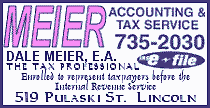|
 While the government has committed $1.5 billion for viewers to spend on converter boxes that will translate digital signals for older televisions, it is largely relying on the broadcast industry to spread the word about the changeover. While the government has committed $1.5 billion for viewers to spend on converter boxes that will translate digital signals for older televisions, it is largely relying on the broadcast industry to spread the word about the changeover.
John Kneuer, chief of the federal agency tasked with ensuring a smooth digital transition, told the Senate Commerce Committee on Thursday that the government will be leaning heavily on broadcasters.
"It's not only their own responsibility, it's in their own interest," said Kneuer, assistant secretary in the Department of Commerce and chief of the National Telecommunications and Information Administration.
Some committee members were clearly worried about the transition. A poll released in January by the Association for Public Television Stations indicated 61 percent of respondents had "no idea" the digital transition was going to take place.
There is a "high potential for a train wreck here," said Sen. Maria Cantwell, D-Wash.

A 2005 report by the Government Accountability Office said 21 million households
-- roughly 19 percent of the nation -- rely on an antenna rather than cable or satellite to receive television signals.
The digital transition, once complete, will provide better sound and sharper signals to television watchers. It also will make better use of the airwaves, freeing prime space in the electromagnetic spectrum that will be auctioned early next year for other uses.
A number of organizations are concerned that many people, particularly the elderly, the poor and minorities, will be caught off guard when the change occurs.
"These consumers will be confused, frustrated and angry that this important information and entertainment source in their home is no longer operational, through no fault of their own," said Nelda Barnett, a member of the board of the directors of the 39-million-member AARP.
After the first of the year, the government will be making available to each household two coupons worth $40 each that can be used to buy two converter boxes. Congress has set aside $1.5 billion to pay for the coupon program.
Initially, $990 million will be used to pay for coupons and cover administrative costs, which are capped at $110 million. An additional $510 million may be allocated, but those coupons are reserved for households that have only over-the-air television.
[to top of second column]


 |
 But only $5 million has been earmarked for public education.
The transition has already begun in some key areas. Cathy Seidel, chief of the Consumer and Governmental Affairs Bureau at the Federal Communications Commission, said that as of March 1 all television receivers shipped in the U.S. were required to have digital tuners.
In April, the agency required retailers to disclose to consumers that televisions that can only receive analog signals are not equipped to receive over-the-air signals beyond Feb. 17, 2009.
Sen. Claire McCaskill, D-Mo., is concerned that consumers who don't get the word would take it out on their elected representatives. "They're not going to call you," she told Kneuer. "They're going to call me. And they're going to be mad."
Dennis Wharton, a spokesman for the National Association of Broadcasters, said television station owners are highly motivated to get the word out. "Our very business is at stake here," he said.
Wharton said stations will begin airing public service announcements worth "tens of millions of dollars" early next year.
"Broadcasters will do our dead-level best to educate Americans on this transition," he said.

___
On the Net:
Senate Commerce Committee: http://commerce.senate.gov/public/
Department of Commerce: http://www.commerce.gov/
Federal Communications Commission: http://www.fcc.gov
National Telecommunications and Information Administration: http://www.ntia.doc.gov/
National Association of Broadcasters: http://www.nab.org/
Government Accountability Office: http://www.gao.gov/
[Associated
Press; by John Dunbar]
Copyright 2007 The Associated Press. All rights reserved. This
material may not be published, broadcast, rewritten or
redistributed.
 |